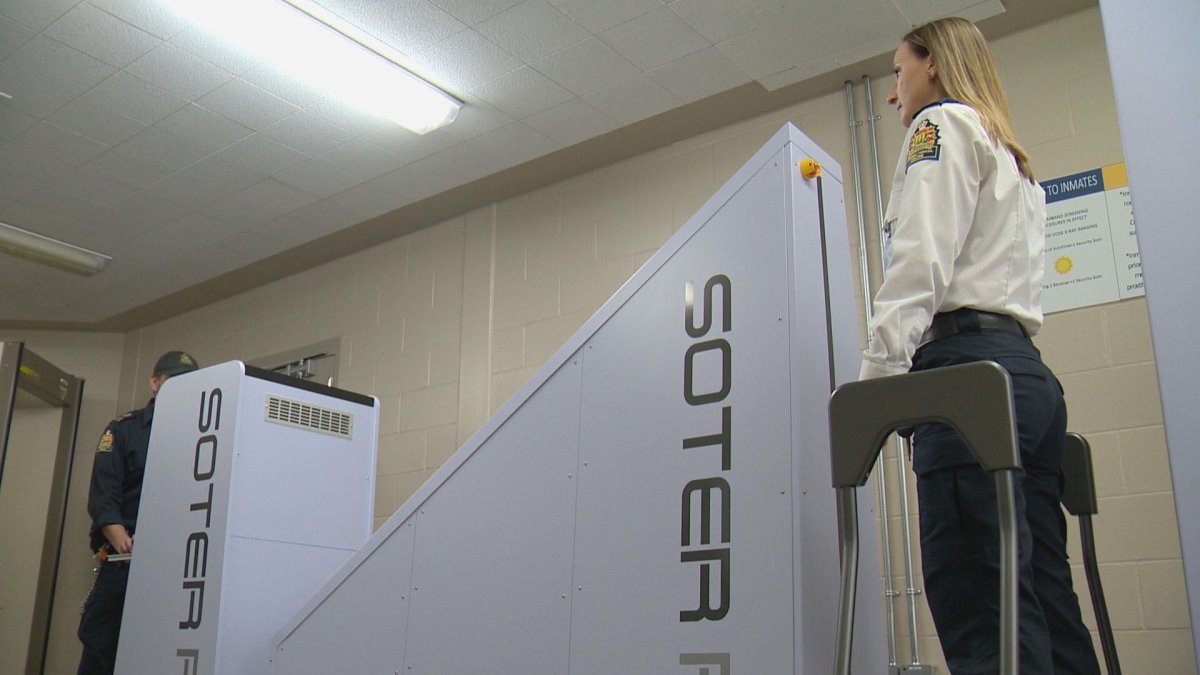The Saskatchewan government says a body scanner installed at the Regina Correctional Centre has already proven to be successful.

The scanner went operational on Oct. 9, and officials said six offenders have been caught since then trying to smuggle contraband into the facility. Three were caught by the body scanner. The other three took advantage of an “amnesty box” where inmates are allowed “void themselves” of contraband prior to entering the scanner.
Regina Correctional Centre director Julien Hulet said it doesn’t matter too much to him whether contraband is being found in the scanner or surrendered ahead of time. He just doesn’t want drugs getting into the jail.
There are two main issues drugs bring into the jail, according to Hulet. Their presence can interfere with patient rehabilitation, through use and being a disruptive black market economic driver.
“We had tobacco and marijuana, those are priced commodities. Tobacco, typically you can buy a pouch on the street for $50. In here they run for around $500,” Hulet explained.
In addition to tobacco and marijuana, the scanner has also helped prevent a type of heroin called purple crush or purple rock from entering the jail.
“Whenever contraband such as drugs is brought into our facilities, it has an inherently negative effect on offenders, their ability to successfully complete rehabilitation programming, and the overall stability of the facility itself,” Corrections and Policing Minister Christine Tell said Monday in a statement.
“The installation of this body scanner is a big step forward for the safety and security of the Regina Correctional Centre, and ultimately the Saskatchewan corrections system as a whole.”
It is the first body scanner installed at a provincial correctional facility in Saskatchewan.
The scanners were first recommended in 2017 following the inquest into the death of a 17-year-old boy at Saskatoon’s Kilburn Hall.
The teen overdosed on methamphetamine while he was custody and died on July 30, 2015.
During the inquest, a jury heard how the teen had meth stashed in his body.
The scanner at the Regina Correctional Centre was installed in March 2019, and staff training took place over the summer.
It allows staff to screen offenders entering the facility for contraband, including drugs, that may be hidden, including inside bodies.
Police across the province have linked rising crime rates to increased drug use. In the Regina Correctional Centre, Hulet estimates a majority of inmates have some degree of substance issue.
“I’d say probably close to 75 per cent of the men that come to our facilities across the province have an issue that would need to be addressed through an abstinence or rehabilitation program,” he said.
The Regina Correctional Centre has a 20-bed drug treatment unit, which runs on a six-week rotation — one week for recruitment, followed by five weeks of treatment. Hulet said the ministry is looking at expanding it across the province.
The Corrections Ministry said it plans to buy body scanners for its facilities in Saskatoon and Prince Albert before the end of the current fiscal year. There are plans to install a body scanner in Pine Grove, the women’s correctional centre, but there is no concrete timeline.
The estimated cost for each machine is between $100,000 and $200,000, officials previously said.
Ministry officials said other measures in use to find contraband include regular facility checks, drug detection dogs, and other technology such as ion scanners and ferromagnetic detectors.
—With files from Katelyn Wilson and Ryan Kessler



Comments